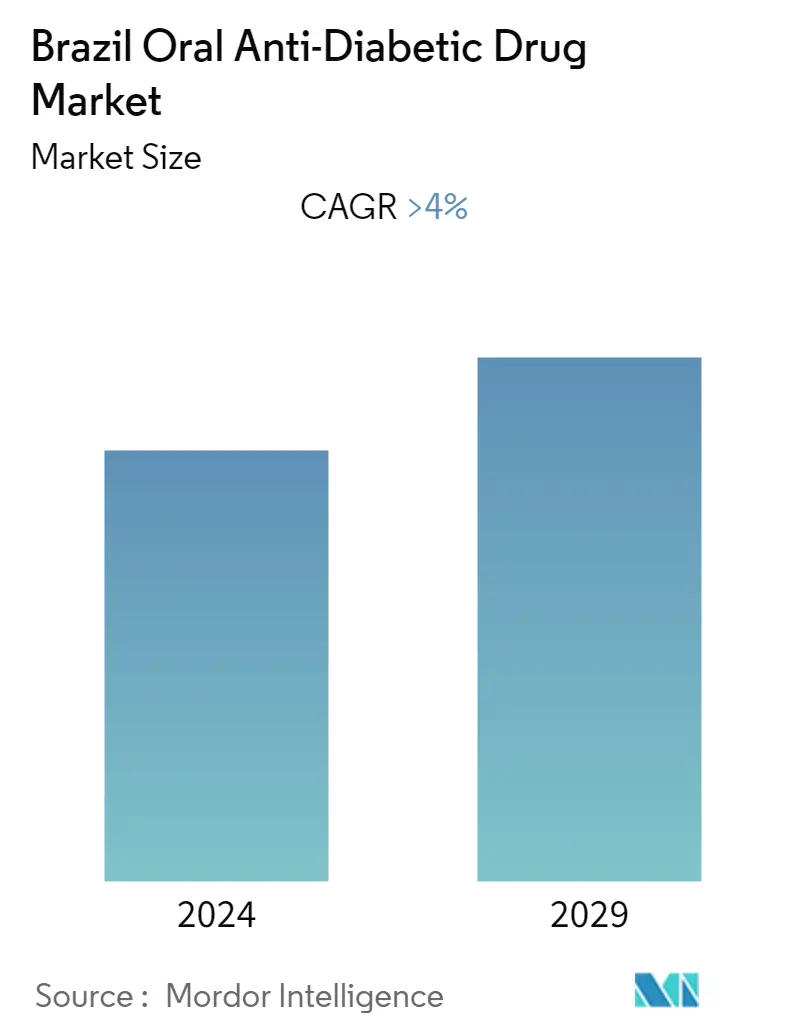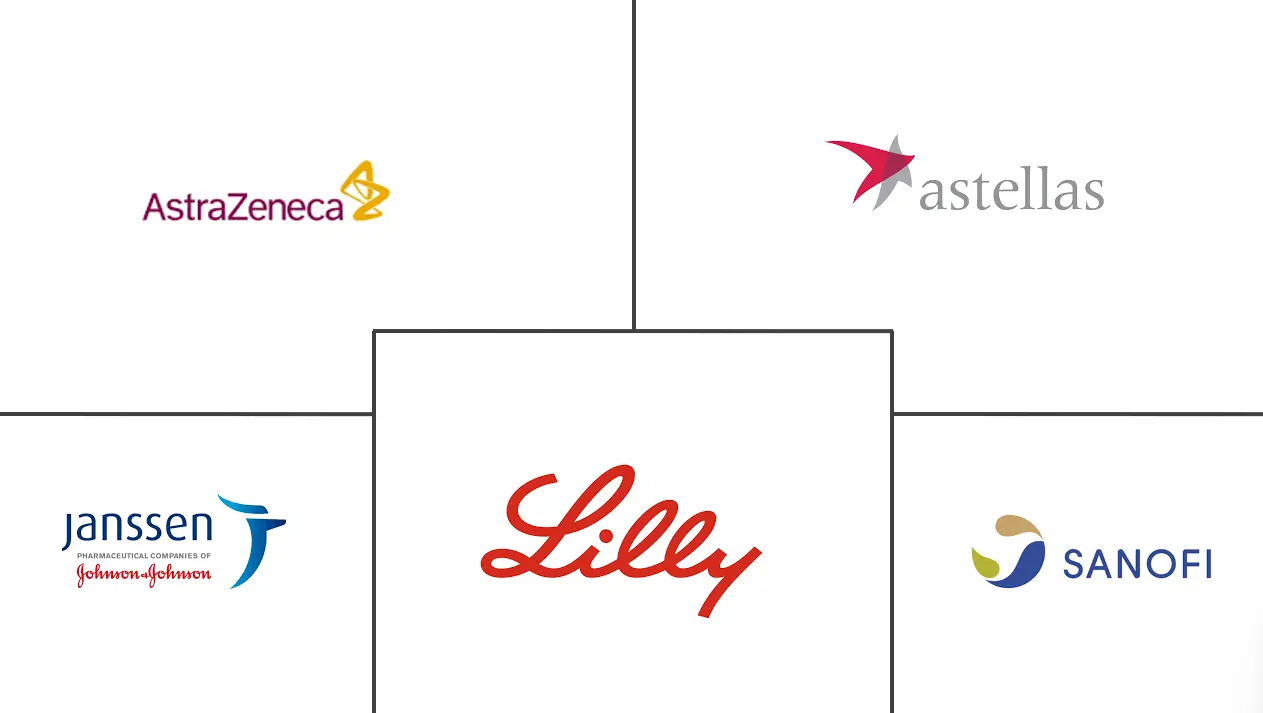Market Size of Brazil Oral Anti-Diabetic Drug Industry

| Study Period | 2019 - 2029 |
| Base Year For Estimation | 2023 |
| Forecast Data Period | 2024 - 2029 |
| Historical Data Period | 2019 - 2022 |
| CAGR | > 4.00 % |
Major Players
*Disclaimer: Major Players sorted in no particular order |
Need a report that reflects how COVID-19 has impacted this market and its growth?
Brazil Oral Anti-Diabetic Drug Market Analysis
The Brazil Oral Anti-Diabetic Drug Market is expected to register a CAGR of more than 4% during the forecast period, with revenue of USD 861 million in the current year.
The COVID-19 pandemic caused early fatalities during the first year of its existence, primarily in older people. Most COVID-19 deaths were caused by co-existing two or more chronic diseases in the same person. Numerous studies established the link between long-term conditions, including diabetes, and unfavorable outcomes in COVID-19 patients. Compared to healthy persons, those with diabetes were more likely to experience significant complications. During COVID-19, the makers of diabetes pharmaceuticals took special care to ensure that diabetic patients received their meds with the assistance of local governments. Drugs known as diabetic medications were created to stabilize and regulate blood glucose levels in people with diabetes. Diabetes patients infected with SARS-CoV-2 during the COVID-19 pandemic may be treated with diabetic medications. The relevance of diabetes treatment medications has been highlighted by the high incidence of diabetes among those hospitalized with COVID-19 infection and the realization that better glycemic management may improve outcomes and shorten hospital stays in COVID-19 patients.
One in ten Brazilian people, or 15.7 million individuals, or roughly 10.5% of the population, have diabetes, according to the IDF Diabetes Atlas 2021. Brazil has the third-highest global diabetes-related health expenditure, costing 42.9 billion USD. Additionally, 18.9% of adults, or 18 million people, have impaired glucose tolerance, which puts them at a greater risk of becoming type 2 diabetes. In Brazil, 32% of people with diabetes are not diagnosed. Only 25% of Brazilians, according to further data on glycaemic management, achieved the treatment target of having an HbA1c of less than 7% before the pandemic, as advised by the Brazilian Diabetes Society (SBD).
Diabetes patients risk significant and even fatal consequences like heart attack, stroke, kidney failure, blindness, and lower limb amputation when undiagnosed or not appropriately controlled. These hurt the quality of life, increase healthcare spending, and make access to treatment more critical. To combat risk factors like obesity and emerging pandemic threats, Brazil has implemented several reforms over the years to improve the distribution of doctors, create new types of service organizations, introduce new financing models, and implement various quality improvement initiatives and policy frameworks. This also shows areas where improvements in how diabetes treatment is provided may be expanded and continued.
